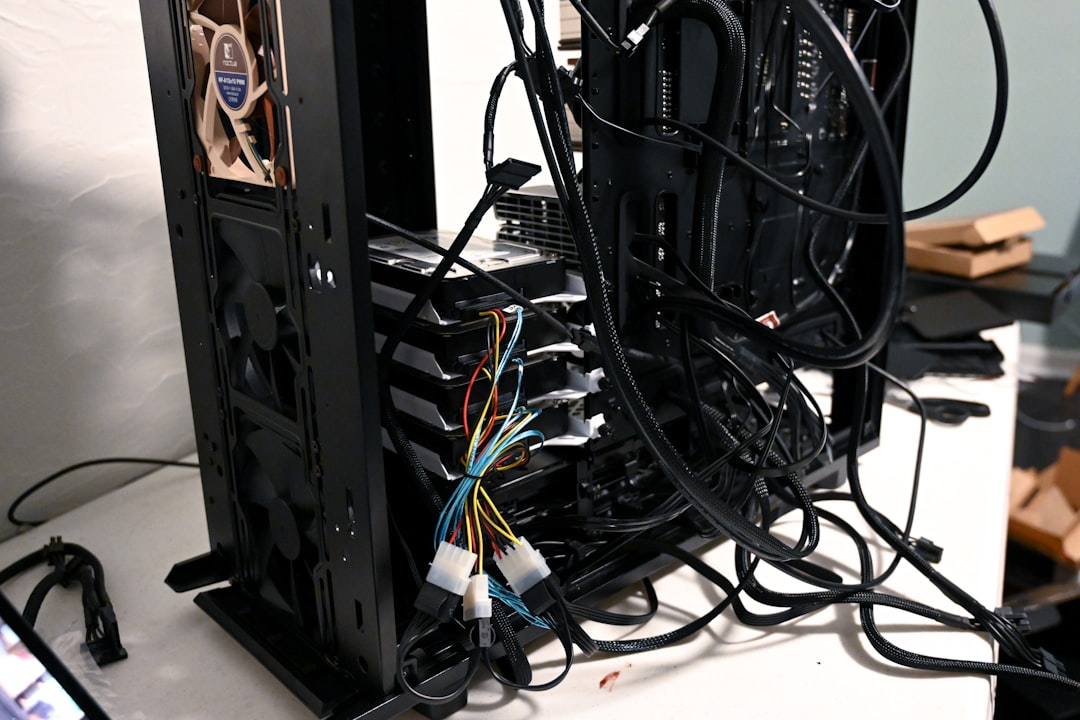In the world of computer hardware, particularly data storage, acronyms and numbers can appear cryptic to those not deeply familiar with the terminology. One such term commonly seen on hard drives, SSDs, and motherboards is “SATA 6Gb/s”. Understanding what this specification means can help users make informed decisions when upgrading or purchasing new components for their systems. This article explores the meaning, implications, and importance of SATA 6Gb/s in today’s computing environment.
What Is SATA?
SATA stands for Serial Advanced Technology Attachment. It is a computer bus interface primarily used to connect storage devices such as hard drives (HDDs), solid-state drives (SSDs), and optical drives to the motherboard. SATA replaces the older Parallel ATA (PATA) standard, offering improvements in data transfer speed, cable management, and device connectivity.
Since its introduction in the early 2000s, SATA has undergone various updates, each increasing performance capacity and reliability. Among these, SATA 3.0—commonly referred to as SATA 6Gb/s—represents a major upgrade over its predecessors.
What Does “SATA 6Gb/s” Actually Mean?
The term “SATA 6Gb/s” refers to the third generation of the SATA interface, formally known as SATA Revision 3.0. The “6Gb/s” specifies the maximum theoretical data transfer speed of the interface, which is 6 gigabits per second, equating to 750 megabytes per second (MB/s) in raw performance. However, due to encoding overhead and real-world limitations, the practical maximum transfer rate hovers around 550–600 MB/s.

To put this in perspective, earlier versions of SATA offered lower transfer speeds:
- SATA I (1.5Gb/s) – Up to ~150 MB/s
- SATA II (3Gb/s) – Up to ~300 MB/s
- SATA III (6Gb/s) – Up to ~600 MB/s
These improvements mean that SATA 6Gb/s offers significantly better performance when transferring large files, loading games, or operating system boot times—especially when used with SSDs, which can take full advantage of the enhanced speeds.
Importance of SATA 6Gb/s with SSDs
While mechanical hard drives (HDDs) are generally limited by the speed of their spinning disks and are unable to reach even 3Gb/s speeds, SSDs do not have this limitation. SSDs can push the SATA 6Gb/s interface close to its maximum capability, making SATA 6Gb/s especially relevant when using modern solid-state drives.
For example, a mid-range SSD might have read speeds of 530 MB/s and write speeds of 450 MB/s. Connecting this drive to a SATA II (3Gb/s) port could create a bottleneck because the interface would be the limiting factor, not the drive itself. SATA 6Gb/s eliminates this bottleneck by allowing drives to operate at their full speed.
Compatibility Considerations
Another advantage of SATA 6Gb/s is its backward and forward compatibility. A SATA 6Gb/s drive can be used with SATA 3Gb/s or even 1.5Gb/s ports, though it will function at reduced speeds matching that of the older SATA revision. Similarly, an older drive can be plugged into a SATA 6Gb/s port, although it won’t benefit from the faster potential speeds.
This means users can upgrade incrementally—adding a SATA 6Gb/s drive to an older system, or gradually switching all components to fully benefit from the latest technology.
Cables and Connectors
The physical connectors used for SATA 6Gb/s are the same as previous versions of SATA. This ensures compatibility and simplifies system builds and component replacements. However, not all SATA cables are made equal. For optimal performance, especially with high-speed SSDs, it’s recommended to use certified SATA 6Gb/s cables. These are designed to maintain signal integrity at higher speeds and typically feature lockable connectors to ensure stability.

Does SATA 6Gb/s Still Matter?
With the increasing popularity of NVMe SSDs and PCIe storage—which offer data transfer rates of up to 7000 MB/s or more—some might wonder if SATA 6Gb/s is becoming obsolete. While it’s true that PCIe NVMe drives offer superior performance, SATA remains relevant for several reasons:
- Cost-effectiveness: SATA SSDs are generally more affordable than NVMe counterparts.
- Compatibility: Most motherboards and laptops support SATA, making it a flexible choice.
- Reliability: SATA drives are mature and well-supported in various operating systems.
- Use-cases: For everyday computing, gaming, or office work, SATA SSDs offer ample speed improvements over HDDs.
Identifying SATA 6Gb/s Ports and Drives
Motherboards often label SATA ports to indicate their speed capabilities. Ports may be color-coded, or descriptions in the motherboard manual might distinguish SATA II from SATA III. Likewise, product descriptions for SSDs and HDDs will typically list “SATA 6Gb/s” or “SATA III” in their specifications.
Limitations of SATA 6Gb/s
Despite its strengths, SATA 6Gb/s does have limitations, especially when compared to modern PCIe interfaces:
- Cannot support ultra-fast data rates beyond 600 MB/s.
- Lacks native support for advanced features like queue depths above 32 or optimized command execution found in NVMe protocols.
Still, for many users looking for a balance between performance and cost, SATA 6Gb/s remains a solid choice.
Real-World Performance and Applications
In everyday tasks such as booting a computer, launching programs, or transferring files, the difference between SATA 3Gb/s and 6Gb/s is noticeable. While NVMe may offer lightning-fast benchmarks, many applications don’t push storage devices to their limits, making the performance advantage of NVMe unnoticed to the average user.
For data backup, home servers, or gaming consoles that support SSD installations, SATA 6Gb/s is more than sufficient and remains the go-to interface for these storage needs.
Conclusion
SATA 6Gb/s is a mature, fast, and reliable interface for connecting storage devices to computer systems. While newer technologies offer higher speeds, SATA 6Gb/s continues to provide an excellent balance between performance, compatibility, and affordability. Its role in modern computing is still prominent, particularly for users who want to upgrade their systems without breaking the bank.
Frequently Asked Questions (FAQ)
- What is the difference between SATA 3Gb/s and SATA 6Gb/s?
The difference is primarily in the data transfer speed. SATA 3Gb/s can transfer up to roughly 300 MB/s, while SATA 6Gb/s supports up to approximately 600 MB/s. - Will a SATA 6Gb/s drive work on an older SATA 3Gb/s motherboard?
Yes. SATA 6Gb/s is backward compatible, so it will work on an older board but only at 3Gb/s speeds. - Do I need special cables for SATA 6Gb/s?
SATA 6Gb/s uses the same connector as previous versions, but it’s recommended to use cables rated for 6Gb/s to ensure reliable data transmission. - Is SATA 6Gb/s fast enough for gaming?
Absolutely. For most games, SATA SSDs dramatically reduce load times compared to HDDs. NVMe drives may offer faster speeds, but the in-game difference may be minimal for most players. - Is SATA 6Gb/s the latest SATA version?
Yes, as of now, SATA 6Gb/s (SATA III) is the latest version widely adopted in consumer electronics. While updates exist, performance gains are marginal and not commonly implemented.
